How to use chromatics in a blues guitar solo
A working knowledge of the in-between notes can get you out of a jam when in a jam
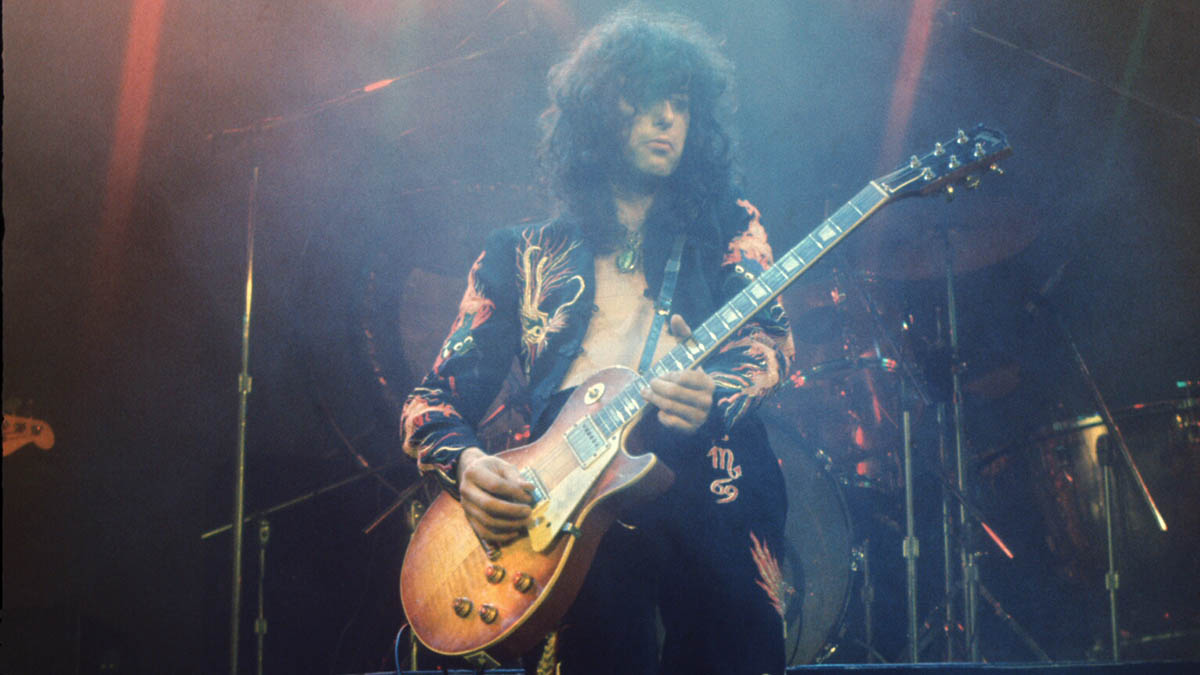
There is an old musician’s adage that says when improvising, you’re only ever a semitone away from the ‘right note’. While this is perfectly true, it doesn’t always feel that way when we get into difficulties.
At one time or another, we’ve all found ourselves using a less than optimum blues scale shape or phrase over a tricky chord progression! There’s no substitute for preparation, but we can minimise such problems by getting more familiar with those ‘in-between’ notes and access more options, not just from the blues scale shapes but any favourite licks or patterns.
Using the b5 or ‘blue note’ as part of the pentatonic shapes is a way many of us will already have employed semitone moves to create tension and/or interest, be that in a riff or solo. Check out the intro of Baby Please Don’t Go from Van Morrison with Them for a bold example of this – or even Deep Purple’s Smoke on the Water.
Adding in further chromatic linking notes between the regular two-notes-per-string pentatonic shapes, you’ll soon come across familiar patterns and/or riffs, such as Led Zeppelin’s Black Dog or Dazed and Confused.
Turning our attention to lead playing, you’ll notice blues and jazz players often slide into notes and phrases from a semitone/fret below. Chuck Berry’s riffing on Johnny B Goode is a prime example of this.
Look to Steve Lukather, too. Though he is a more modern breed of player, he manages to keep it bluesy rather than straying into fusion, while adding in plenty of chromatic linking notes – check out his solos on Toto’s Rosanna. And remember, these example phrases are designed to demonstrate the concept rather than suggest a style, so feel free to just take the bits you like and put them to use. See you next time!
Example 1
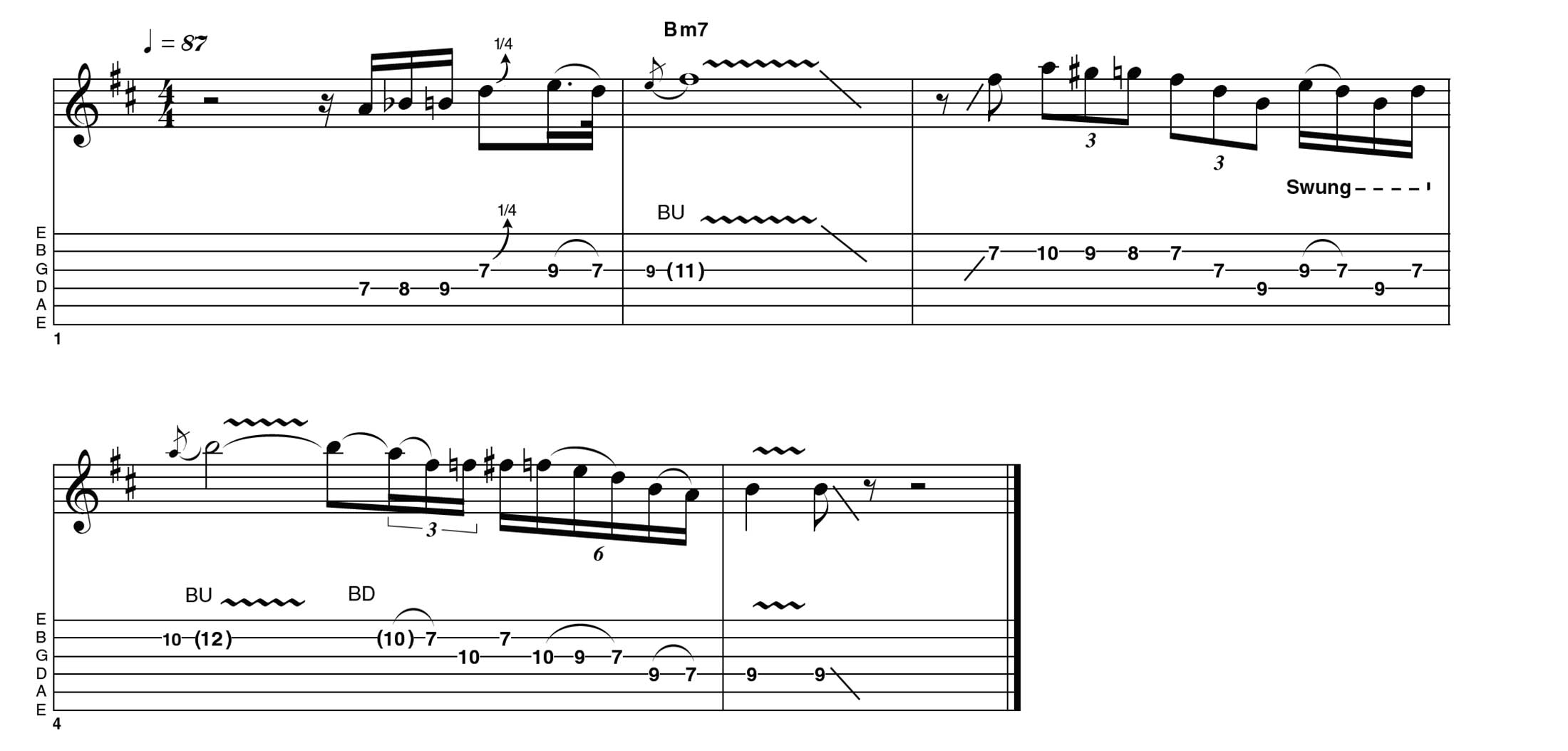
Using shape 1 of the B minor pentatonic, you’ll see immediately that I’ve added several chromatic linking notes – firstly adding in a link between the 7th and 9th fret on the fourth string in the initial phrase, then shortly afterwards descending from the 10th to the 7th fret of the second string.
The b5 (F natural) also appears towards the end, highlighted by its repetition against the F# you would normally expect to see in the B minor pentatonic.
Example 2
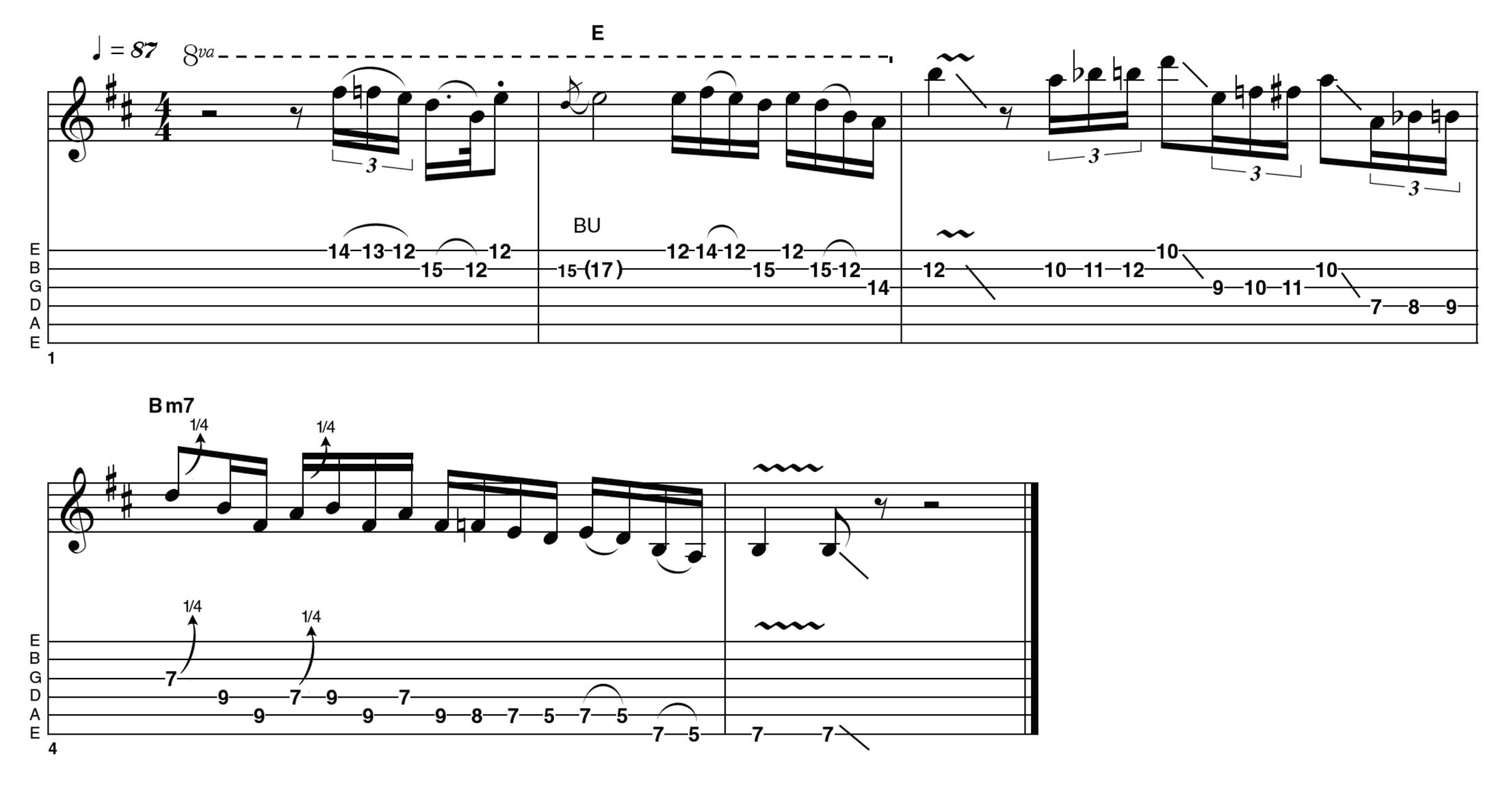
Jumping straight in with a three-semitones-in-a-row descending phrase from the top of a shape 3 B minor pentatonic, this example jumps around the shapes a bit, reusing the same picked triplet idea, slowing down a little back at shape 1 before dropping down to the shape 5 just below.
As well as demonstrating the chromatic linking notes, phrases such as this can help build confidence in jumping to different shapes and registers on the fretboard. No-one likes to feel trapped, do they?
Example 3
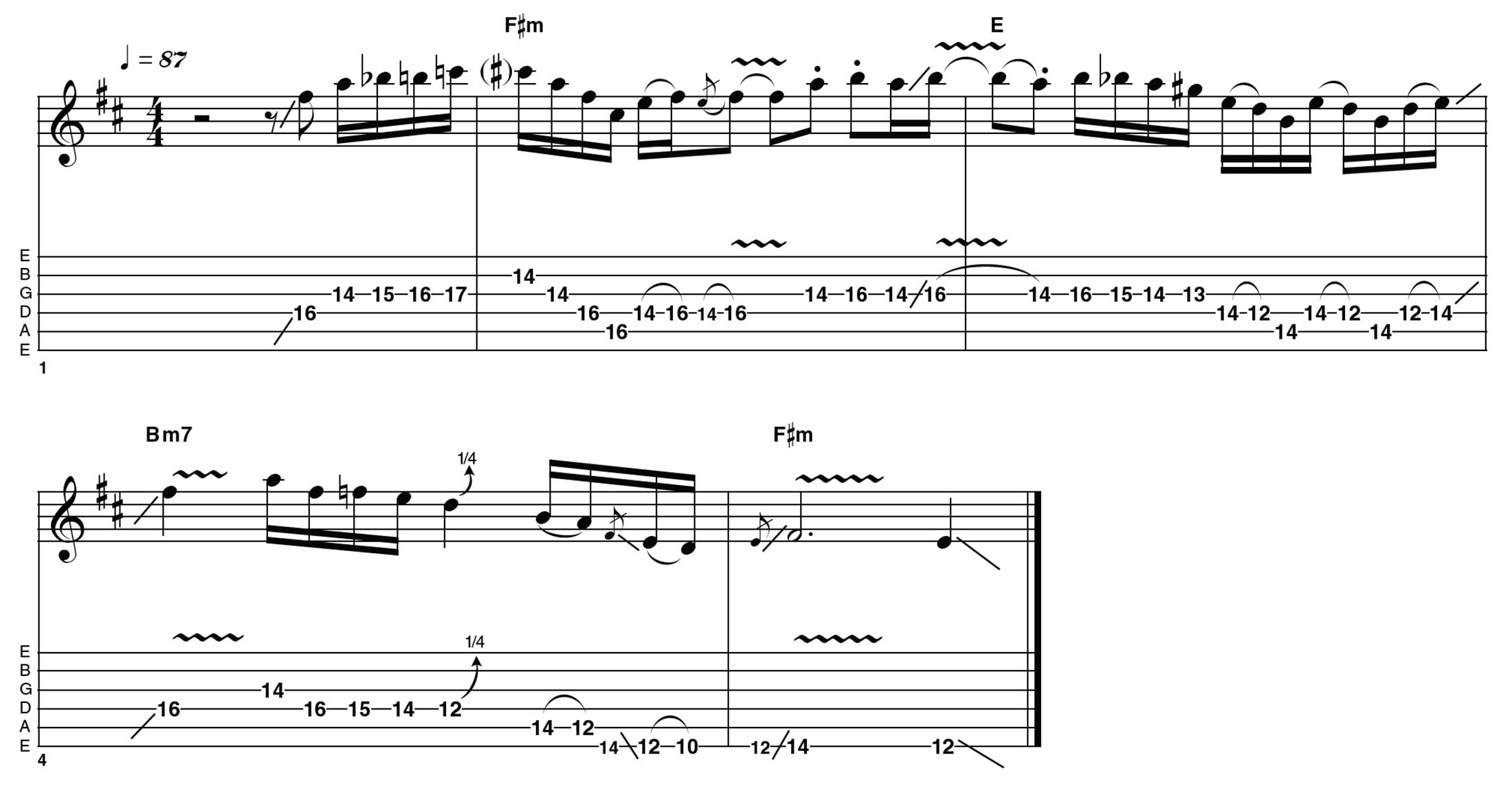
This example goes a little more overboard, though hopefully you can still see that all I’m doing is adding linking notes between the two-note-per-string pentatonic shapes.
Where the chord changes from F#m to E major, I’ve referenced that briefly with a four-note descending chromatic run down to G# on the third string, before dabbling in the lower reaches of shape 3 B minor pentatonic. From here, it slides between shapes 2 and 3 for the finishing phrase.
Example 4
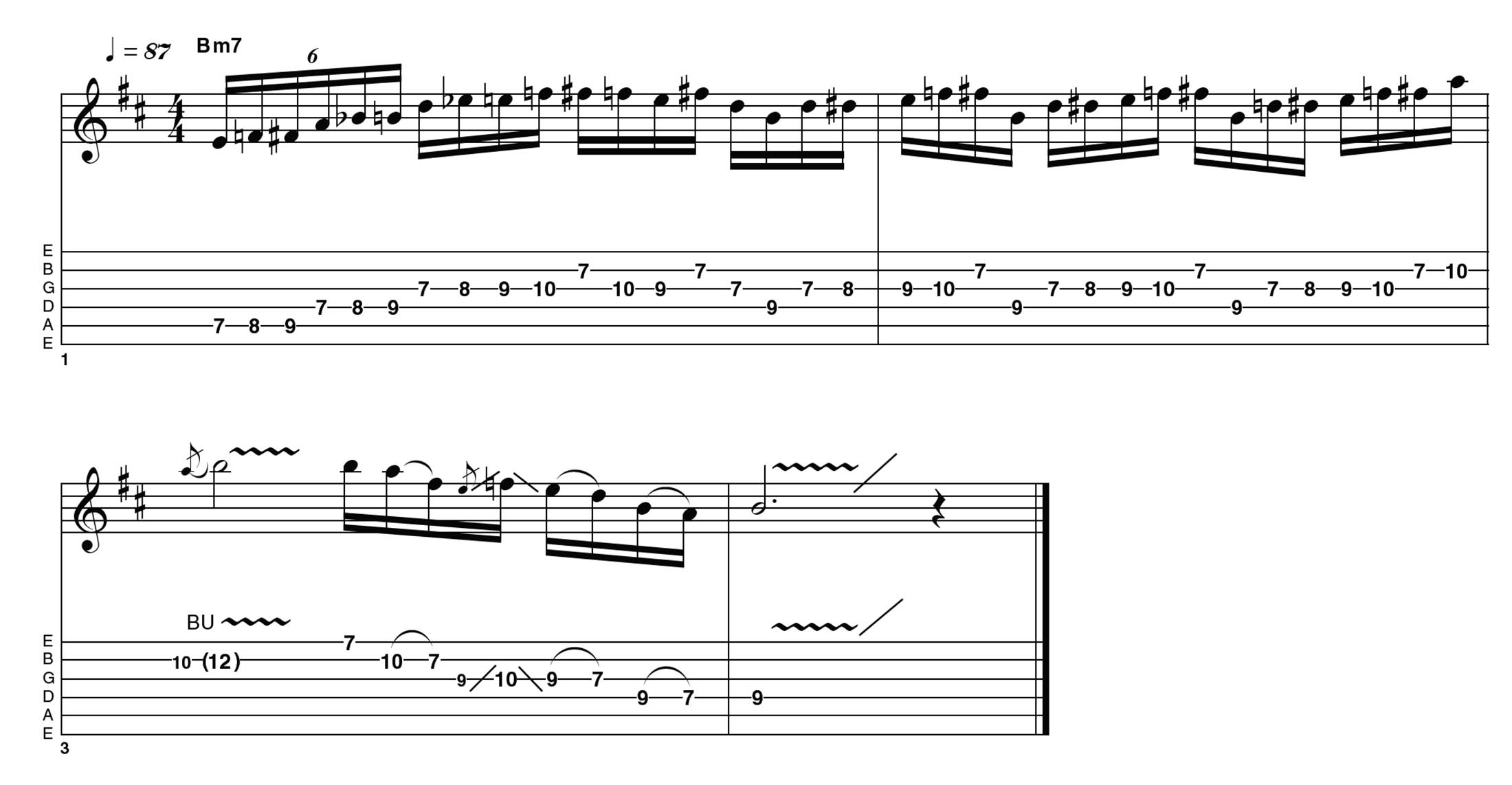
Finishing as we started using the shape 1 B minor pentatonic, this example begins with some rapid chromatic triplets before repeating the same ascending chromatic phrase on the third string.
Each time it finishes on the F# (second string), we jump back to the root note on the fourth string. You’ll see that the line that’s four adjacent semitones in between features the b5 (F natural). Ideas like this can also be used at slower tempos for a more ‘trad-blues’ feel.
Hear it here
Led Zeppelin – Led Zeppelin II
As mentioned earlier, many Led Zeppelin riffs feature chromatic linking notes. You’ll find examples of this on every Zep album, but for some reason this one came to mind first.
Check out the riffs in The Lemon Song, Living Loving Maid (She’s Just a Woman) and Heartbreaker, with the latter also featuring quite a few examples of this in the solos, particularly the last solo section, where Jimmy is using chromatic triplets in a way that just might have influenced a couple of the example phrases!
Deep Purple – Machine Head
A blues influence pervades this whole album and Ritchie Blackmore is on great form. The riffs from Smoke on the Water and Space Truckin’ offer cool semitone shifts and/or chromatic lines.
You’ll also hear Ritchie weaving some chromatic lines into his solos in Pictures Of Home, Lazy and Highway Star. Sometimes we can be so used to hearing these things that we don’t always notice them, so it’s interesting what we find when we go looking for it, even if it is in a familiar place.
Steve Lukather – Transition
Steve approaches chromatic moves in an intelligent and interesting way. The shifting semitones on Creep Motel are very much blues-inspired. Elsewhere, Transition starts like a Jeff Beck-inspired ballad before changing gear to an aggressive riff with more chromatic shifts than you can shake a stick at.
Last but not least is a bit of a ‘wild card’ in the shape of Right the Wrong, which features a very unusual guitar figure with lots of semitone shifts – not ‘textbook’ chromatic but definitely from a similar place.
Get The Pick Newsletter
All the latest guitar news, interviews, lessons, reviews, deals and more, direct to your inbox!
As well as a longtime contributor to Guitarist and Guitar Techniques, Richard is Tony Hadley’s longstanding guitarist, and has worked with everyone from Roger Daltrey to Ronan Keating.










![Joe Bonamassa [left] wears a deep blue suit and polka-dotted shirt and plays his green refin Strat; the late Irish blues legend Rory Gallagher [right] screams and inflicts some punishment on his heavily worn number one Stratocaster.](https://cdn.mos.cms.futurecdn.net/cw28h7UBcTVfTLs7p7eiLe.jpg)



